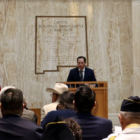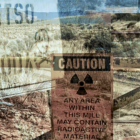Indigenous Affairs
House budget leaves out money for state employees to focus on missing and murdered Indigenous people
|
This reporting was supported by the International Women’s Media Foundation’s Fund for Indigenous Journalists: Reporting on Missing and Murdered Indigenous Women, Girls, Two Spirit and Transgender People (MMIWG2T). A proposed bureau within the Indian Affairs Department focused on a crisis of missing and murdered Indigenous people might be in peril.
At issue is how much money the Legislature will give the department.The Legislature’s budget-making Legislative Finance Committee (LFC) says the department, which has a 40% vacancy rate, should use its existing personnel budget to staff up the new bureau. (About 18% of positions across state government were vacant in fiscal year 2022, according to a 2023 report from the LFC to state lawmakers.)But a department spokesman said the agency wants to both create new staff positions to carry out a state response plan the Missing and Murdered Indigenous Women and Relatives Task Force issued in 2022 and fill the existing vacancies. Officials announced their plan to seek funding for more staffers after Gov. Michelle Lujan Grisham’s administration was criticized for quietly disbanding the task force last year.
The proposed state budget the House passed Wednesday, however, followed the recommendation of the LFC, and only included $120,000 extra — enough to hire one full-time employee — instead of the $600,000 the agency sought.
Spokesman Aaron Lopez told New Mexico In Depth the department won’t hire more staff to concentrate on missing and murdered Indigenous people unless they get more money. Some of the state task force’s recommendations could be achieved by passing new laws but during this legislative session and last year’s, legislation directly responding to the crisis has been sparse.
Asked in December if the department would be advocating for any legislation this year to address the crisis, Secretary-designate Josett Monette, then the deputy secretary, only mentioned the request for additional employees.







